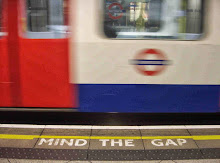Anyone seeking to take the temperature of Argentina in 2013 could do a lot worse than
having a look at a poster that appeared plastered over the walls in Buenos Aires Argentina Argentina
Political adverts, posters that appear
overnight and may often be torn down during the next day, are never far from
the walls and signposts of Buenos
Aires
Today’s advert is simple, and to the untrained
or uninterested eye, it will be of no consequence. I only saw two copies, and
they were on pillars next to each other, during my daily commute; by the time I
laid eyes on them, one had been almost entirely torn down and the other looked
quite wrinkled. The concept is basic: the face of a fat man, looking knowingly
at the observer, on a background that has been divided into two colours – half yellow,
half orange. Both the backgrounds have ‘BA’ written on them in the opposing
corners, and in very different fonts. Underneath is a slogan in Spanish.
This advert, though simple, is very clever. It
has united several themes that will be key to the Argentine government this
year and shows clearly who is considered to be the enemy. It is a paranoid,
angry, swiping piece of political propaganda, which is entirely typical of an
election year.
Let’s start with the background. The yellow and
orange, both startling and eye-catching colours by themselves and worse
together, are not accidental. The yellow refers to the Buenos Aires City
Less obvious is the inclusion of the orange
background. This is a reference to the government of Buenos Aires Argentina
The next figure attacked in the advert is the
fat man, Jorge Lanata. Lanata is famous for many reasons, not least of all for
being one of the founders of pro-government newspaper Pagina/12. He was forcibly ejected, but in the last year he has
enjoyed something of a renaissance – as a key opposition figure. Lanata’s
weekly Sunday night show ‘Periodismo Para Todos’ (Journalism for All), riffing
on the government’s trend to put ‘para todos’ on anything within reach, aimed
to present investigative journalism into key Argentine issues. The result was
thousands of viewers for his broadcasters (Canal 12, owned by opposition media
group Clarín), and his launching as a recognizable face of anti-government
reporting. Lanata’s show was often in the unique position among Argentine TV of
setting the political debate for the week following its broadcast, as the
government rushed to refute allegations made by his team of investigators.
The line in Spanish bringing everything
together is another riff on an opposition show. This time, the message refers
to a series (also broadcast by the Clarín Group’s Canal 12) which is about
losing weight, called ‘Cuestion de Peso’ – in English, this translates to ‘Weighty
Question.’ However, on the advert, the line is ‘Cuestión de Pe$o$’ – ‘A Matter
of Pesos’, the local currency. In this one line, the authors of the advert have
made it clear that the issue here is money, while at the same time taking a dig
at Lanata for his weight.
No government spokesperson nor
government-affiliated group claimed responsibility for the advert, but the
message is loud and clear. Facing up to the midterm elections scheduled to be
held in October, the government’s enemies in 2013 are: Macri, Scioli, Lanata
and Clarín. And, of course, there is one thing that unites all of these groups –
money.
This advert is eye-catching and disgusting. It
is offensive, unprovoked, cunning and malicious. It is a piece of work that
would not be allowed or even tolerated in most other truly democratic states. However,
it is also well-timed, and as a depiction of animosity, as an underlining of
the ‘us vs them’ mentality espoused by the ‘national project’ of the present
administration, it is brutally effective. This City does indeed breathe
communication.


